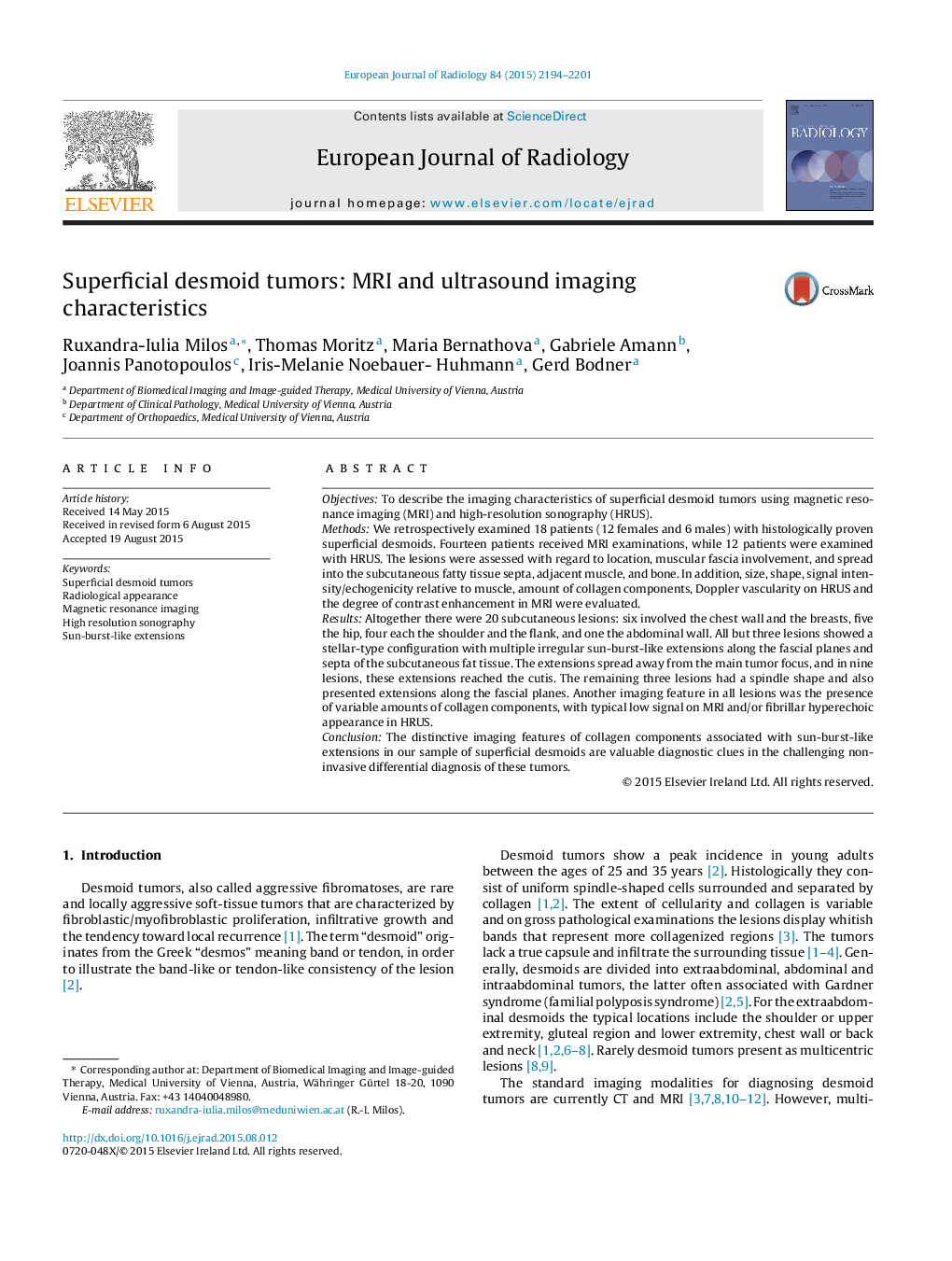| Article ID | Journal | Published Year | Pages | File Type |
|---|---|---|---|---|
| 4225017 | European Journal of Radiology | 2015 | 8 Pages |
•Superficial desmoids are locally aggressive superficial soft-tissue tumors.•MRI and HRUS are best suited for their radiological assessment.•Superficial desmoids show sun-burst-like extensions adherent to adjacent structures.•These tumors contain collagen which has a characteristic appearance on MRI and HRUS.
ObjectivesTo describe the imaging characteristics of superficial desmoid tumors using magnetic resonance imaging (MRI) and high-resolution sonography (HRUS).MethodsWe retrospectively examined 18 patients (12 females and 6 males) with histologically proven superficial desmoids. Fourteen patients received MRI examinations, while 12 patients were examined with HRUS. The lesions were assessed with regard to location, muscular fascia involvement, and spread into the subcutaneous fatty tissue septa, adjacent muscle, and bone. In addition, size, shape, signal intensity/echogenicity relative to muscle, amount of collagen components, Doppler vascularity on HRUS and the degree of contrast enhancement in MRI were evaluated.ResultsAltogether there were 20 subcutaneous lesions: six involved the chest wall and the breasts, five the hip, four each the shoulder and the flank, and one the abdominal wall. All but three lesions showed a stellar-type configuration with multiple irregular sun-burst-like extensions along the fascial planes and septa of the subcutaneous fat tissue. The extensions spread away from the main tumor focus, and in nine lesions, these extensions reached the cutis. The remaining three lesions had a spindle shape and also presented extensions along the fascial planes. Another imaging feature in all lesions was the presence of variable amounts of collagen components, with typical low signal on MRI and/or fibrillar hyperechoic appearance in HRUS.ConclusionThe distinctive imaging features of collagen components associated with sun-burst-like extensions in our sample of superficial desmoids are valuable diagnostic clues in the challenging non-invasive differential diagnosis of these tumors.
